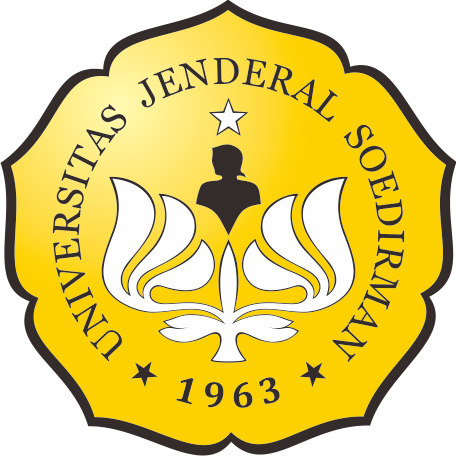PERSEPSI PENGUNJUNG TERHADAP BUAYA MUARA (Crocodylus porosus) DAN FASILITAS PEMELIHARAAN DI PENANGKARAN DAN KEBUN BINATANG
Abstract
Estuarine crocodile often considered as dangerous animal due to continual news of human crocodile conflict cases around the world. This study aimed to analyze the perception of visitors about estuarine crocodile in captivity and facilities in two captive breeding sites. We conducted field observation and structured interview to 120 respondents in two local zoos: the Indonesia Jaya Crocodile Park (TBIJ or crocodile park) in Bekasi and Ragunan Zoo (TMR or the zoo) in Jakarta. All visitors have low knowledge about estuarine crocodile, which they obtained mostly from mass media. Although most visitors know that estuarine crocodies are protected however in pratice their don’t have enough empathy to captive crocodiles. Visitors to both areas are local who lives near the vicinity of the park or zoo. Crocodile park visitors mostly came from Bekasi with an average number of visits 1 time and 1-hour length of visit. The reason for their visit were the closeness of the location and to learn crocodiles. The zoo visitors mostly came from Jakarta with an average number of visits more than 3 times and 6 hours length of visits. Respondents visited the zoo because of low cost and recreation. Visitors of the zoo provided positive review for several aspects in the zoo, while visitors in crocodile park gave positive review only on physical condition of crocodiles.
Keywords
References
Abdullah. 2010. Kajian Pemanfaatan Kebun binatang Mini Jantho sebagai Penunjang Pembelajaran Biologi. Jurnal Edukasi Biologi. Available from http://jurnal.unsyiah.ac.id/JBE/article/download/437/597 [27 Februari 2016]
Ahmad S, Ali Z, Nemat A, Sikander SA, Hussain Z, Saleem K. 2015. The Study of Public Perception for Captive Animals at Lahore Zoo, Pakistan. Journal of Animal and Plant Sciences 25(3): 509-513.
Amarasinghe AAT, Madawala MB, Karunarathna DMSS, Manolis SC, Silva A, Sommerlad R. 2015. Human Crocodile Conflict and Conservation Implications of Saltwater Crocodiles Crocoylus porosus (Reptilia: Crocodylia: Crocodylidae) in Srilanka. Journal of Threatened Taxa 7(5): 7111-7130.
Ardiantiono, Sheherazade, Atmadja RK, Wardhani A. 2015. Analisis Serangan Buaya Muara (Crocodylus porosus) di Indonesia melalui Eksplorasi Database CrocBITE Berbasiskan Citizen Science. Inovasi. 24(3):8–16
Astuti ID. 2012. Efektivitas penggunaan sign system di Kebun binatang Gembira Loka Yogyakarta [skripsi]. Yogyakarta (ID): Universitas Negeri Yogyakarta.
Bickford D, Posa MRC, Qie L, Campos-Arceiz A, Kudavidanage EP. 2012. Science communication for biodiversity conservation. Biological Conservation 151(1):74–6.
Bitgood S. 2000. Role of Attention in Designing Effective Interpretive Labels. Journal of Interpretation Research 5(2): 34-45.
Crocodile Specialist Group. 1996. Crocodylus porosus. The IUCN Red List of Threatened Species 1996: e.T5668A11503588. Available from http://dx.doi.org/10.2305/IUCN.UK.1996.RLTS.T5668A11503588.en. Downloaded on 25 December 2018.
[CITES] Convention on International Trade in Endangered Species of Wild Fauna and Flora. 2010. Appendix I, II and III valid from 14 October 2010. Available from http://www.cites.org/eng/app/Appendix-E.pdf [7 Mei 2015].
Dwiputra R, Arief R. 2012. Preferensi Wisatawan terhadap Sarana Wisata di Kawasan Wisata Alam Erupsi Merapi. Jurnal Perencanaan Wilayah dan Kota A SAPPK V1N2 : 428-437.
Higginbottom K. 2004. Wildlife Tourism: Impact, Management and Planning. Australia (AU): Common Ground Publishing Pty Ltd.
Mangunsong JT. 2011. Potensi penangkaran buaya Asam Kumbang sebagai salah satu obyek wisata di kota Medan [skripsi]. Medan (ID): Universitas Sumatera Utara.
Mardiastuti A, Soehartono T. 2003. Perdagangan reptil indonesia di pasar internasional. In: Kusrini MD, Mardiastuti A, Harvey T, editors. Konservasi Amfibi dan Reptil di Indonesia Prosiding Seminar Hasil Penelitian Departemen Konservasi Sumberdaya Hutan Bogor 8 Mei 2003. Bogor: Institut Pertanian Bogor. p. 130–44.
Monalisa. 2009. Perancangan sign sistem edukatif untuk anak-anak di Kebun binatang Bandung [skripsi]. Bandung (ID): Universitas Kristen Maranatha.
Nasution S. 2007. Metode Research (Penelitian Ilmiah). Jakarta (ID): Bumi Aksara.
Notoadmodjo S. 2003. Pendidikan dan Perilaku Kesehatan. Jakarta (ID): PT Rineka Cipta
Patrick P, Sue DT. 2013. Zoo Talk. New York (US) : Springer
Puan CL, Zakaria M. 2007. Perception of Visitors Toward the Roles of Zoos : A Malaysian Perspective. International Zoo Yearbook 41 : 226-232.
Stoinski TS, Allen MT, Bloomsmith MA, Forthman DL, Maple TL. 2002. Educating Zoo Visitors about Complex Environmental Issues: Should We Do It and How?. Zoo Visitors and Complex environmental Issues 45(2) : 129-143.
Nadkarni N. 2004. Not preaching to the choir: communicating the importance of forest conservation to nontraditional audiences. Conservation Biology 18: 602–606.
Sugiyono. 2012. Statistika untuk Penelitian. Bandung (ID): Alfabeta.
Sulistiono AB. 2010. Pengaruh kualitas pelayanan, fasilitas dan lokasi terhadap keputusan menginap (Studi pada tamu Hotel Srondol Indah Semarang) [skripsi]. Semarang (ID) : Universitas Diponegoro.
Swarbrooke J, Susan H. 1999. Consumer Behaviour in Tourism. British (GB): British Library Cataloging in Publication Data.
Webb GJW, Manolis SC, Brien ML. Saltwater Crocodile Crocodylus porosus. 2010. In: Manolis SC, Stevenson C, editors. Crocodiles Status Survey and Conservation Action Plan. Third Edition. Darwin: Crocodile Specialist Group. p. 99–113.
Woodhams DC. 2009. Converting the religious: putting amphibian conservation in context. BioScience 59: 463–464.
Young C, Witter J. 1994. Developing Effective Brochures for Increasing Knowledge of Environmental Problems: The Case of the Gypsy Moth. Journal of Environmental Education 25(3): 27-35.
Article Reads
Total: 1346 Abstract: 1346Refbacks
- There are currently no refbacks.

This work is licensed under a Creative Commons Attribution-ShareAlike 4.0 International License.
This website is maintained by:
Bio Publisher
The Faculty of Biology Publishing
Faculty of Biology
Universitas Jenderal Soedirman
Jalan dr. Suparno 63 Grendeng
Purwokerto 53122
Telephone: +62-281-625865
Email: biologi@unsoed.ac.id
T his website uses:
OJS | Open Journal System
A free journal management and publishing system that has been developed by the PKP (Public Knowledge Project) version 2.4.8.0.
All article content metadata are registered to:
Crossref
An official nonprofit Registration Agency of the International Digital Object Identifier (DOI) Foundation.
Articles in this journal are indexed by:









